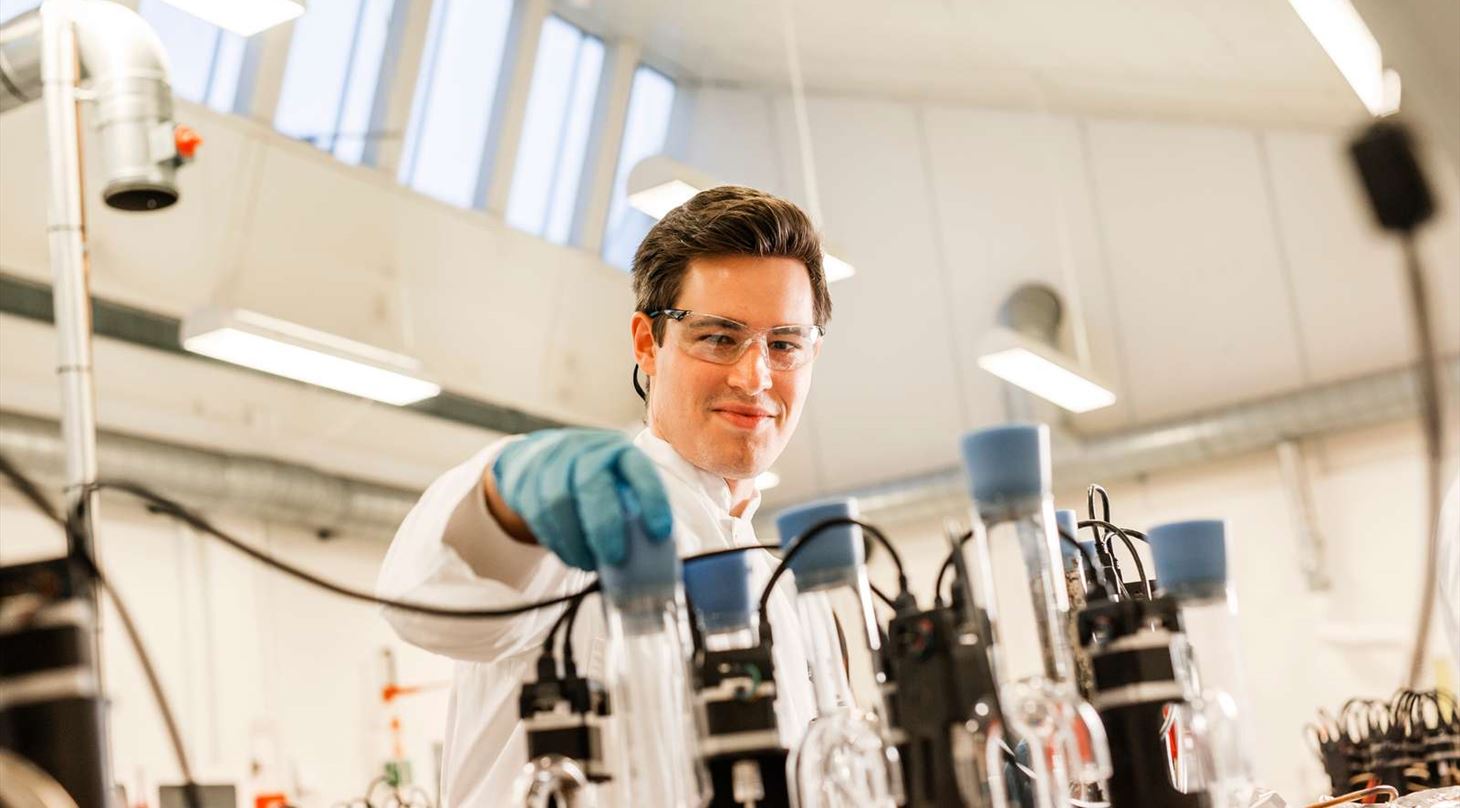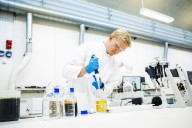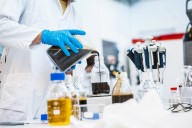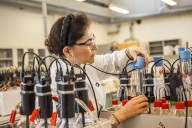
Biogas – 1. Biomasses for Biogas
A biogas plant can convert most types of organic material into biogas - from animal manure and straw to residues from food production, medicine and bioplastics.
Danish Technological Institute offers consultancy and testing of biomasses under controlled conditions, providing you with a well-documented basis for decision-making for future investments in biomasses, pre-treatment technology and equipment for biogas production.
Access advanced testing facilities and years of experience
At Danish Technological Institute, we have well-equipped chemical and microbiological laboratories and a team of specialists with unique knowledge of the chemical and microbiological aspects of biogas production. This means you can draw on more than 15 years of experience in optimising biogas production processes - including hundreds of BMP analyses.



Testing biomass for biogas
How much biogas can be produced from the biomass you use today - or want to use tomorrow? You can find out with a BMP analysis.
BMP is an abbreviation for Biomethane Potential and is a key tool for those who buy or sell biomass for biogas production. The BMP analysis is used to estimate the amount of biogas that can be produced from a specific biomass under anaerobic conditions.
The analysis is performed in our state-of-the-art biogas laboratory. Here, we take a sample of the biomass to be tested and place it in a closed container together with a culture of anaerobic bacteria. The released gas, primarily methane and CO2 , is measured over time, and by calculating the accumulated amount of gas over a certain period of time, we can determine the potential biogas production for the biomass in question.
The controlled digestion tests are carried out independently and standardised according to international recommendations. This means that you get both an accurate and data-based basis for decision-making and conclusions that can be compared when you later want BMP analyses of other biomasses.
Who can benefit from a BMP analysis?
We can test any type of biomass for you. A BMP analysis is particularly relevant for:
- Biomass owners who want to utilise and recycle residues for biogas production, but are unsure of the benefits
- Biogas plants that want to optimise energy production and test new biomasses, but avoid costly downtime
- Biomass buyers who want documentation of the value of a given biomass
- Technology developers who want to test the effect of their treatment technology on the gas potential of a specific product
We follow up on the numbers with counselling
The conclusions of the BMP analysis are summarised in a report - but we offer you more than just numbers. We can help you with further advice on biomass marketing, biomass planning and operational advice.
If you would like to know more about how a determination of biogas potential can help you, please contact us for a non-binding offer.
Mechanical, thermal or chemical pre-treatment
Before input materials can be converted in a biogas reactor, they often need to be pre-treated to increase their biodegradability and improve the degradation process. There are several different types of pre-treatment, including mechanical, thermal and chemical pre-treatment.
Mechanical pretreatment often involves some form of crushing or breaking down the biomass to increase the surface area and thus make them more accessible to the microorganisms in the biogas reactor. Thermal pretreatment involves heating the biomass to a certain temperature for a period of time to increase biodegradability. Chemical pretreatment often involves the use of acids or bases to dissolve or etch the surface of the biomass to increase microbiological convertibility.
Evaluation of pre-treatment methods and technologies
However, the purpose of pre-treatment is the same either way: to increase biogas yield while reducing the overall cost of the process.
That's why we offer to test both specific pre-treated biomasses and pre-treatment technologies. This is done under controlled conditions in the laboratory and gives you valuable insight into how different pre-treatments affect biogas yield.
- Substrate optimisation by mixing different biomasses such as straw, grasses, food products etc.
- Purity determination of source-separated organic waste
- Effect of inhibiting or missing nutrients
- Optimal operating temperature, dwell time, required adjustment period when changing substrate or process conditions
Contact us for an initial dialogue on how we can help you achieve the most effective pre-treatment.
